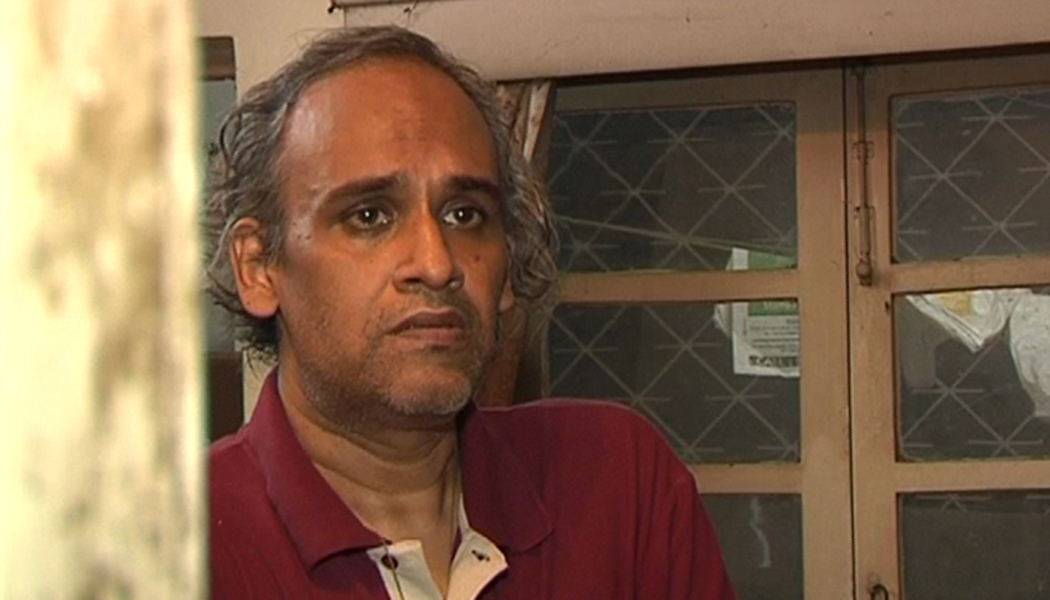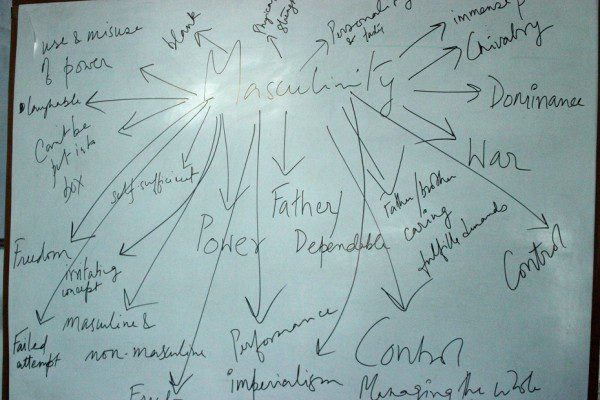Looking at the “Robinson Street Psycho” as an aberration allows us to live out our daily charades without confronting hard questions about the myth of the happy family, says Sayan Bhattacharya.
3 Robinson Street has become a Disneyland of horror. The cash-strapped state government should immediately install a ticketing counter there. If the urban citizen can shell out hundreds of rupees to experience the chills in designer caves filled with plastic skeletons, rubbery cobwebs and Ramsay Brothers sound effects in amusement parks, they might as well pay up for the live horror show that Robinson Street has turned into. And yes, there should be extra charges for every selfie, groupfie and every click of the house. The government could further monetise Robinson Street by presenting a conducted tour of the insides of the house. It cannot be allowed to remain a free-for-all horror show on a Sunday afternoon. The television and the newspapers have already provided enough free fodder. Enough.
The whole of last week, the Bengali media (and the English press from Kolkata) has dedicated its prime time to what it variously calls the “Psycho Case”, “Kankal Kando” and “The Skeleton Case”. Salaciously, it has used clips of horror films, earthy filters, shots of skulls and music to set the mood. It has publicised the intensely private ruminations of a person to add to the macabre quotient of the story while lakhs of people have hungrily gobbled the last morsel of the story to ask for more details. There have been stray voices of anger here and there denouncing the media. Sensationalism. Yellow Journalism. These are the buzzwords. All valid charges, and I have nothing much to add to those well-argued pieces on social media.
However, this critique of the media absolves us of our complicity in the spectacle of the “Psycho Case”. While pointing out sensationalism in the media is vital and we must keep critiquing oppressive structures of the market and the many forms of entertainment and consumption that it spawns, why do we never turn the mirror on ourselves and ask what is exactly so horrific about this whole episode? What is it about Partha De that so appeals to us that our horror is equally matched by an irresistible urge to know more about him? Is it some primal instinct present in all of us that the market is cleverly manipulating? In short, what explains the steady throng of people outside Partha De’s home or the rapt attention with which we are following the trajectory of the case or how the address 3 Robinson Street has acquired the cult status of Baker Street or Bishop Lefroy Road, even if it is only until we move onto the next titillation?
What is it about Partha De that so appeals to us that our horror is equally matched by an irresistible urge to know more about him? Is it some primal instinct present in all of us that the market is cleverly manipulating?
Let’s pause for a moment and examine the bare bones—no pun intended—of the incident. A brother and sister following an unorthodox religious practice. (Isn’t that very common? We all know people who believe in black magic, who visit astrologers and tantriks, but for the sake of political correctness, we do not admit it.) The sister was deeply attached to her dogs and she did not bury them after they died. She continued to live with her dead loves. She sought peace in her home and meditated and starved herself to death. The brother wished to follow her on that path too but their father’s sudden suicide raised alarm bells, and the brother ended up in a mental hospital. The family did not believe in Hindu rituals of cremation and the brother did not think that his sister had actually died. He believed she would come back, and continued living with her dead body. There was no verbal communication between the father and the siblings. They communicated through written notes. The brother wrote copiously in a diary.
All this is now being used by the police and the media to reconstruct the chain of events. Newer complexities—“angles”, in media parlance—have emerged in the story. Incest, sexual fantasies, Wicca, pornography and so on. Leaving aside the question of ethics (since the media has clearly displayed none!) of publicising Partha De’s personal, robbing him of all agency and integrity by putting him up as an exhibit for our titillatory gaze, the question that begs to be asked is what exactly is so exceptional about these elements to the ‘Psycho Case’ that has so hooked us? Do we not know of—are we not part of—families that do not communicate with each other? When was the last time we attended a family wedding with great alacrity and unalloyed joy? Are we all in touch with our distant families? Forget distant, how many of us who live with our parents do not crave for our own spaces? How many of us haven’t cursed our parents for curbing our freedoms, for interfering with our ways of life?
The reader might consider the comparison farfetched, but the complexities of family life often border on the macabre. Fathers sexually abusing daughters, brothers raping sisters, marital rape, dowry deaths, suicides—these are all glaring realities that are commonplace in our society, the skeletons of our family lives that we keep firmly buried in our closets. The statistics on intrafamilial sexual crimes and the evidence to support that the family is the most crucial site of emotional violence prick holes into our imitation games of the happy families of Bollywood.
The age-old patriarchal structures of marriage and family are so embedded in us that despite abuse, torture, lack of rights, the façade of family as the elixir of life needs to be upheld and reiterated.
The age-old patriarchal structures of marriage and family are so embedded in us that despite abuse, torture, lack of rights, the façade of family as the elixir of life needs to be upheld and reiterated. The family is often the site of the first stirrings of pleasure—cousins sexually exploring each other, sexual undercurrents between family members—pleasures and dangers so intricately connected that it either becomes difficult to tease out violation from pleasure or the very fact of pleasure is hushed up in order to maintain familial stability. But then, what happens when the skeletons tumble out? Then they need to be labelled monsters. After all, if you acknowledge them as common, the foundations of the family starts shaking. And how can we allow that?
Some more thoughts on skeletons, both literal and metaphorical. Much is being made of how this man could live with his dead sister for so many months. What kind of a perversion or mental sickness could make him live with a skeleton, offer her food? Mental health professionals have been summoned to pass a verdict on Partha De’s state of mind; the media has daily panels of experts talking about paranoia, schizophrenia and so on, but this again raises the question of ethics. Who decides that Partha is mentally ill? The public? The media? On what basis? If he indeed needs medical attention, is it for the public to know? Why are conversations between him and doctors being publicised? What makes us assume that the mentally ill do not need confidentiality?
These questions bring me back to the point of hard reflection. Can we all claim that we have been able to bury our past and move on? Why do we preserve photographs? Do we not like to believe that we have frozen some moments in time? As time passes, our relations with those moments could change too, so then aren’t those frozen moments nothing but the skeletal remains of a past that we desperately try to hold onto? Why do some deaths leave holes in our hearts that we can never manage to fill? It could be a dead mother, a first love, a lost refuge—how many of us have never lived with death?
Who decides that Partha is mentally ill? The public? The media? On what basis? If he indeed needs medical attention, is it for the public to know?
There is a room in my mother’s house that I refuse to enter because there lived one of my maternal uncles, the one I was closest too. He suddenly vanished one day. More than a decade later, I am still living with the man I most loved. I refuse to acknowledge his absence in that room. I know that he is absent, but that does not take away from the fact that I do not and will not enter that room. That is my decision. My choice. My love. The skeleton of my love which cannot be reduced to a mental condition. Therefore, I feel a strange affinity towards Partha when he says that his sister did not die. No, I will never meet him. I will never visit 3 Robinson Street, because physical proximity or rationalising the human condition or clinically dissecting it is not the point here. It is that irreducible web of relationality that connects me with him.
Looking for disturbance in Partha’s childhood as a justification for the so-called horrors that ensued allows us to gaze at him as an aberration, while our daily charades remain unchallenged. Partha De has been turned into that stillborn baby with three hands and no face, the human aberration that is preserved in chemicals and displayed in a jar for visitors in public hospitals and museums, or that beggar with contorted limbs whose horrific physicality becomes the site for our prurient pleasure and therefore translates into some income for the man. (The sheer ‘horror’ of Partha’s story is perhaps one of the reasons why he has been given a table fan, quality food, cutlery and other facilities at Pavlov Hospital, unlike its other inmates who continue to live in subhuman conditions.) That is why it is important to turn the mirror on us for a change. For it is only if we introspect and ask ourselves some tough questions that we can truly begin to understand Partha De and offer him the privacy that is due to him. We cannot just stop at pointing fingers at the media.















Ashley Tellis
Brilliant!